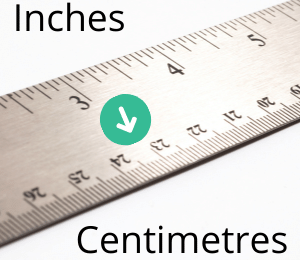In interior design, specific details can transform a space, elevating it to new heights of sophistication and charm. One such element is scribe molding, a subtle yet impactful addition that brings a touch of elegance to any room. As we delve into the world of the scribe, prepare to be captivated by its timeless beauty and discover the numerous ways it can enhance your home.
Chapter 1: The Essence of Scribe Molding
Scribe molding, shadow molding or shadow line is a slender decorative trim installed between two intersecting surfaces. It is primarily used to bridge the gap and create a seamless transition between different architectural elements, such as where a cabinet meets a wall or where a wall meets a ceiling. Crafted with precision and attention to detail, it brings harmony and balance to a space while adding a touch of visual interest.
Chapter 2: Types and Styles
It comes in various styles and materials, offering endless possibilities for customization. Common materials include wood, MDF (medium-density fiberboard), and polyurethane. Wood scribe, with its natural grain and warm tones, imparts a classic and organic feel to a room. MDF molding, on the other hand, is more affordable and can be easily painted to match any color scheme. Polyurethane scribe is a durable and low-maintenance option, perfect for moisture-prone areas.
From a design perspective, there are numerous styles of scribes to choose from. Traditional crown molding, with its ornate details and gentle curves, adds a touch of grandeur to any space. Alternatively, more detailed and contemporary profiles offer a sleek and modern aesthetic. Whether your interior design leans towards the classic or the current, there is a molding style to suit your taste.
Chapter 3: Enhancing the Space
One of the most remarkable aspects of a scribe is its ability to transform a space. By skillfully installing molding, a room gains a refined and finished appearance. Scribes can visually expand the height of a ceiling, making the room feel more spacious and grand. It can also frame cabinets or built-in furniture, adding a sense of cohesion and elevating the overall aesthetic.
Moreover, scribes can hide imperfections or gaps between different surfaces. It acts as a graceful transition, concealing uneven edges or rough finishes, resulting in a seamless and polished look.
In addition to its visual benefits, scribe also offers practical advantages by protecting vulnerable areas from damage, such as chipped corners or excessive wear.
Chapter 4: Creative Applications
While it is traditionally used for transitions between walls, ceilings, and cabinetry, its applications are not limited to these areas. Creative homeowners and designers have found unique ways to utilize scribes to elevate their interior spaces. For instance, scribes can be used as a decorative frame for artwork or mirrors, adding a touch of sophistication to the display. It can also be applied to furniture, transforming a simple piece into a statement of elegance.
Two Cents
It can elevate any interior space with its understated yet impactful presence. From its ability to seamlessly bridge the gaps between architectural elements to its capacity to add a touch of visual interest and refinement, molding is a versatile design element that should be noticed. With a wide range of styles and materials, it can be tailored to suit any design aesthetic, ensuring a cohesive and polished look. So, consider incorporating scribe into your interior design repertoire to infuse your space with timeless beauty and elegance.
Use Cases on Scribe Molding
One of the primary use cases for scribe molding is in cabinet installations. When cabinets are installed against walls, there is often a small gap or unevenness between the cabinet and the wall. Scribe molding fills this gap and seamlessly transitions between the two surfaces. By carefully installing scribe molding along the edges of the cabinets, the installation appears flawless, hiding any imperfections and enhancing the overall aesthetic appeal of the cabinetry.
Use Case 2: Wall-to-Wall Transitions
In rooms where walls meet each other, or walls meet ceilings, there can be irregularities or gaps due to variations in the construction or settling of the building. Scribe molding can create a smooth and visually pleasing transition between these surfaces. The gaps are concealed by carefully aligning the scribe molding along the intersecting edges, resulting in a clean and finished appearance. This use case is pervasive in formal living areas, dining rooms, and hallways.
Use Case 3: Window and Door Casings
Scribe molding can also use around windows and doors as a decorative element. There might be gaps or unevenness around the frames when windows or doors installed in existing walls. Scribe molding can be applied to these areas to provide a polished and refined look. By framing the edges of the windows and doors with scribe molding, the gaps are concealed, creating a seamless transition between the walls and the window or door casings.
Use Case 4: Furniture and Built-In Units
Beyond its conventional applications, scribe molding can be used creatively to enhance furniture pieces or built-in units. For instance, if you have a custom-built entertainment center or bookshelf, scribe molding can be added to the edges to give it a finished and sophisticated appearance. Additionally, scribe molding can frame and elevate freestanding furniture items such as mirrors, giving them a touch of elegance and making them stand out as statement pieces.
Use Case 5: Artwork and Decorative Displays
Scribe molding can even be used in artwork and decorative displays. You can create a visually appealing and cohesive look by installing scribe molding as a frame around paintings, photographs, or mirrors. The molding adds a layer of sophistication and serves as a finishing touch, elevating the overall presentation of the artwork or decorative display. This use case allows you to incorporate scribe molding into your interior design uniquely and creatively.
How To Install Scribe Molding?
Installing scribe molding requires precision and attention to detail to ensure a seamless and professional finish. Here is a step-by-step guide on how to install scribe molding:
Tools and Materials Needed:
- Scribe molding
- Measuring tape
- Miter saw
- Nail gun or hammer and finishing nails
- Wood glue
- Sandpaper
- Paint or stain (optional)
- Paintbrush or stain applicator (optional)
Step 1: Measure and Cut the Scribe Molding Start by measuring the areas where you want to install the scribe molding. Take precise measurements of the length required for each piece. Moreover, use a miter saw to cut the molding at 45-degree angles for corner pieces. Cut the molding to the appropriate size for straight sections, ensuring the ends are square.
Step 2: Prepare the Molding Before installing the scribe molding, it’s a good idea to sand it lightly to smooth out any rough edges or imperfections. If you plan to paint or stain the molding, this is also the time to apply the desired finish. Allow the paint or stain to dry completely per the manufacturer’s instructions.
Step 3: Test Fit the Molding Before securing the scribe molding in place, perform a test fit. Hold each piece against the intended surface to ensure it fits properly. Make any necessary adjustments or recuts if needed.
More details
Step 4: Apply Wood Glue (Optional). If desired, apply a thin layer of wood glue to the back of the scribe molding. This helps provide extra adhesion and ensures a secure fit. However, if you’re using a nail gun, the nails will typically hold the molding in place without needing glue.
Step 5: Secure the Scribe Molding Using a nail gun or a hammer and finishing nails, carefully attach the scribe molding to the intended surface. Also, place nails along the length of the molding, ensuring they penetrate the surface underneath for a secure hold. For corner pieces, ensure the angles fit tightly together and use nails to secure them.
Step 6: Fill Nail Holes and Sand (Optional). If you prefer a seamless look, you can fill the nail holes with wood filler that matches the color of the molding. Moreover, once the filler dries, use fine-grit sandpaper for sanding it down until it’s smooth and flush with the molding surface.
Step 7: Finishing Touches (Optional) If you still need to finish the molding with paint or stain, you can do so now. Apply the desired finish according to the manufacturer’s instructions and allow it to dry completely.
And there you have it! Following these steps, you can install scribe molding and achieve a polished and professional look in your space. Additionally, remember to take your time, measure accurately, and ensure a secure fit for the best results.
Conclusion:
Scribe molding serves a variety of practical and aesthetic purposes in interior design. From filling gaps and concealing imperfections to providing a polished transition between different surfaces. Also, scribe molding enhances the overall visual appeal of a space. Its versatility allows it to use in various applications, including cabinet installations. The wall-to-wall transitions, window, and door casings, furniture, and built-in units, and even artwork displays. By incorporating scribe molding into your design projects. Moreover, you can achieve a refined and sophisticated look that adds a touch of elegance to any room.





